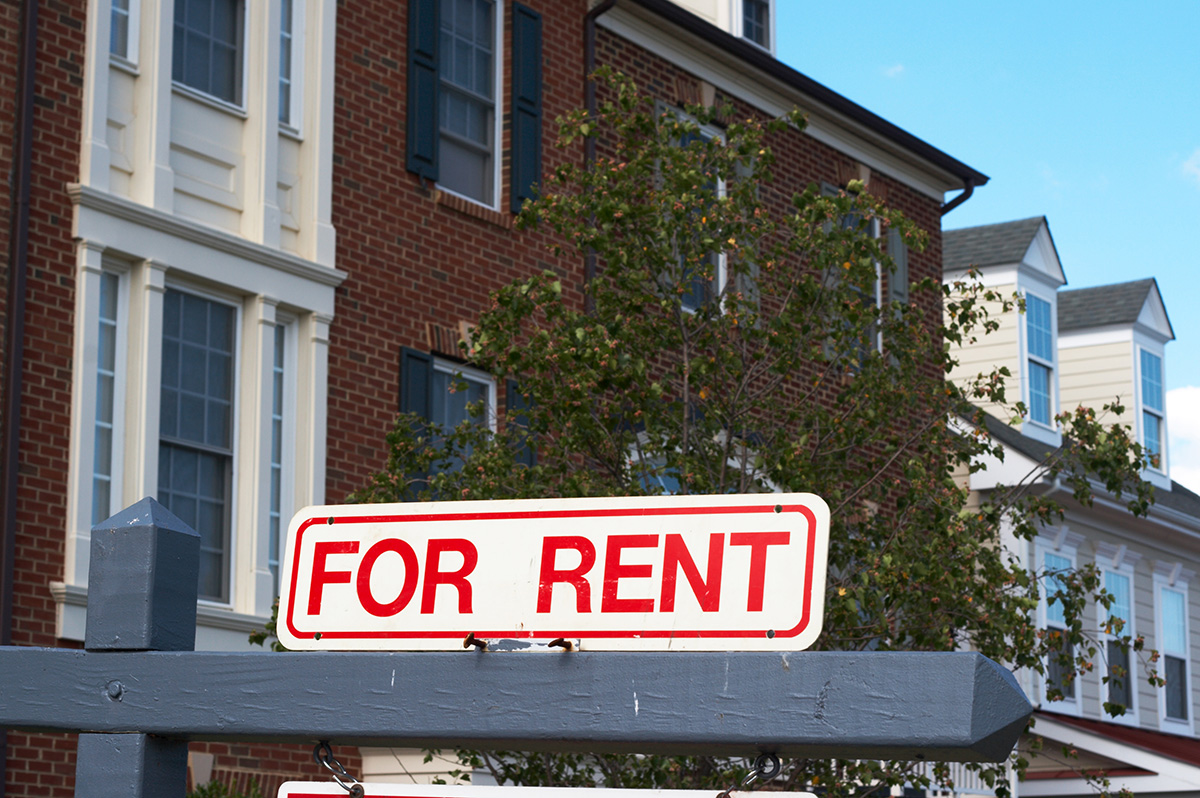Living
Gay, bi men remain key to HIV epidemic
After 30 years of AIDS, many breakthroughs but infection rates on the rise
On June 5, 1981, the U.S. Centers for Disease Control and Prevention published an article in its authoritative journal Morbidity and Mortality Weekly report that experts now consider the first signal that an unprecedented worldwide epidemic had begun.
“In the period of October 1980-May 1981, 5 young men, all active homosexuals, were treated for biopsy-confirmed Pneumocystis carini pneumonia at 3 different hospitals in Los Angeles, California. Two of the patients died,” the MMWR article stated.
“Pneumocystis pneumonia in the United States is almost exclusively limited to severely immunosuppressed patients,” said the article. “The occurrence of pneumocytosis in these 5 previously healthy individuals without a clinically apparent underlying immunodeficiency is unusual.”
It would take another few years before scientists named the condition detected in the men discussed in that MMWR article as Acquired Immune Deficiency Syndrome or AIDS. The name AIDS followed an earlier term used by some researchers and the media – Gay Related Immune Disorder or GRID.
In reflecting on the tumultuous developments surrounding AIDS over the past 30 years, leaders of AIDS advocacy organizations and LGBT activists in the U.S. who lived through the early years of the epidemic say that, to some extent, the MMWR article of June 1981 still has considerable resonance for gay men.
They acknowledge that so much has changed for the better over the past 30 years, including breakthroughs in biomedical research resulting in highly effective drugs that transformed AIDS from a death sentence into a manageable, chronic illness like diabetes.
But AIDS activists also point out that HIV and AIDS continue to disproportionately impact gay men or men who have sex with men (MSM) in the United States and other countries.
And although the perception of AIDS as a “gay disease” has largely receded from the minds of most Americans, AIDS activists say they find themselves in the ironic position of having to remind Congress and state and local governments that more resources and funding are needed for HIV prevention programs targeting gay and bisexual men.
“MSM is the only group for whom, according to the CDC, new infections are still increasing,” said Ronald Johnson, vice president for policy and advocacy for AIDS United, a national group formerly known as AIDS Action.
“So there continues to be a concern that there is not enough targeted prevention resources to MSM, particularly MSM of color and young MSM of all races and ethnicities,” Johnson said.
According to the CDC, while MSM account for about 2 percent of the U.S. population, more than half of all new HIV infections in the U.S. each year (53 percent) occur among MSM. CDC data also show that MSM make up nearly half of all people living with HIV in the U.S. – 48 percent.
CDC figures show that white MSM “account for the largest number of annual new HIV infections of any group in the U.S., followed closely by black MSM,” according to a CDC fact sheet released last month.
“There are more new HIV infections among young black MSM (aged 13-29) than among any other age and racial group of MSM,” the fact sheet says.
The Obama administration, with input from AIDS advocacy organizations, released a National HIV/AIDS Strategy document in July 2010 that, among other things, calls for an aggressive effort to develop better HIV prevention programs targeting MSM.
Johnson and Carl Schmid, deputy executive director of the AIDS Institute, a national advocacy group, praised the administration for developing the strategy document, which they say covers most of the bases needed for addressing HIV prevention programs for MSM.
But the two said the proposals in the strategy document have yet to be fully implemented. They note that delays in its implementation are due, in part, to the U.S. economic situation that has prevented needed increases in federal AIDS funds and severe cutbacks in state and local funding for AIDS-related programs.
Phill Wilson, president and CEO of the Black AIDS Institute, said in a commentary last week in the Washington Informer, a black community newspaper, that he fears the horrors of the AIDS epidemic of the 1980s, when friends and family members watched loved ones die due to a lack of effective medical treatment, could return to some degree in the next few years.
According to Wilson, if the federal government fails to boost funding for the federal-state AIDS Drug Assistance Program (ADAP), low income people who rely on the program to provide them the medications they need keep the AIDS virus in check could become casualties just as their predecessors became casualties years earlier. But this time, he said, an inability to gain access to medicine due to funding shortfalls would be responsible for their fate at a time when effective medicine is readily available.
He called such an outcome “immoral.”
The ADAP program was created under the Ryan White AIDS Care Act to provide life-sustaining drugs for low-income people with HIV and AIDS who are under insured or don’t have any health insurance to help pay for the drugs.
ADAP funding cuts by states and a large increase in the number of people applying for ADAP assistance has resulted in nearly 8,000 people being placed on state waiting lists for the AIDS drugs they need to remain healthy.
The health insurance reform law that President Obama proposed and Congress passed two years ago was expected to relieve the ADAP funding pressure on states when it takes effect in 2014. However, some states that oppose the law have filed lawsuits seeking to prevent its provision requiring all citizens to buy some form of health insurance from going into effect, making its outcome uncertain.
Nearly all AIDS advocacy groups support the law, saying it would strengthen medical care for large numbers of people with HIV/AIDS.
Dr. Anthony Fauci, director of the National Institute of Allergy and Infectious Diseases, an arm of the U.S. National Institutes of Health, has been the leading federal government official monitoring the AIDS epidemic and directing AIDS-related research since the disease burst on the scene in 1981.
In a speech commemorating the 30th anniversary of AIDS at NIH headquarters in Rockville, Md., on Tuesday, Fauci said he’s optimistic that an AIDS vaccine can be developed in the near future.
“We have scientific evidence that a safe and effective HIV vaccine is possible,” he said in a statement released on May 18.
“In 2009, a clinical trial in Thailand involving 16,000 people demonstrated for the first time that a vaccine could safely prevent HIV infection in a modest proportion of study participants,” he said. “Many of the best minds in HIV vaccine science are examining blood samples and data from the Thai trial to learn how the vaccine candidate prevented HIV infections and to consider how it could be modified to be more effective.”
Fauci said NIAID is also optimistic about development within the next few years of effective vaginal and rectal microbicides that can be used to prevent the transmission of HIV during sexual contact.
Fauci and other researchers have also pointed to studies showing the effectiveness to a certain degree of prescribing HIV drugs for use by non-infected people believed to be at high risk for HIV infection, such as men who have sex with men.
Known as pre-exposure prophylaxis, or PrEP, the use of this prevention measure is said to have the drawback of being less effective if people fail to take the drug as required. Some also have expressed concern that people using this prevention method are subject to potential side effects of the drugs and may be discouraged from using condoms, which experts say is one of the most effective methods of HIV prevention.
Events and developments in the early years of AIDS
• 1981: The CDC reports in its June 1981 edition of MMWR and subsequent editions that year that an estimated 170 gay men had succumbed to Pneumocystis carini pneumonia and Kaposi’s sarcoma, a rare skin cancer, over the preceding two years. The CDC studies of these cases cited a serious malfunctioning of the body’s immune system in those who contracted the conditions.
• 1982: Gay Related Immune Disorder, or GRID, became the first name to describe what is now known as AIDS. Cases reached epidemic proportions in the U.S., moving beyond clusters of gay men in New York, San Francisco and Los Angeles and into groups with no obvious risk factors.
• 1983: Gay leaders, independent medical researchers and health and social services agency officials testify before a congressional committee that the federal response to AIDS was highly inadequate. They issue a plea for the federal government and the Reagan administration to increase federal funding and federal initiatives to fight AIDS.
• 1985: In late July, actor Rock Hudson stunned the nation when he issued a statement saying he had AIDS and was receiving treatment in Paris that he said he couldn’t get in the U.S. He died three months later at age 59. His announcement and death drew massive mainstream media attention to AIDS. His death prompted his close friend, actress Elizabeth Taylor, to help found the American Foundation for AIDS Research to raise funds for AIDS causes.
• 1988: The NAMES Project AIDS Memorial Quilt makes its second trip to Washington in the spring, where it’s displayed on the Ellipse near the White House. Later that year, about 1,100 AIDS activists staged a protest at the headquarters of the U.S. Food and Drug Administration in suburban Maryland outside D.C., denouncing the FDA for taking too long to approve new drugs for people with AIDS. Police arrested at least 176 of the protesters after they blocked access to the FDA building’s main entrance.

Some vehicles age quietly — but not muscle cars.
For 2026, the Chevrolet Corvette tightens its focus, fixes one glaring flaw (the previously dowdy interior) and flaunts a futuristic design. The Dodge Charger, on the other hand, is loud and proud, daring you to ignore its presence at your peril.
CHEVROLET CORVETTE
$73,000-$92,000
MPG: 16 city/25 highway
0 to 60 mph: 2.8 seconds
Cargo space: 13 cu. ft.
PROS: Awesome acceleration. Race-car feel. Snazzy cabin.
CONS: No manual transmission. No rear seat. Tight storage.
Finally, the Chevrolet Corvette feels as good inside as it looks flying past you on the freeway. That’s thanks to the classy, completely redesigned cabin. Gone is the old, polarizing wall of buttons in favor of a sleeker, three-screen cockpit. There’s a large digital gauge cluster, a wide infotainment screen angled toward the driver, and a marvy new auxiliary display. Everything is modern and a bit glitzy — but in a good way.
Fit and finish are higher quality than before, and the controls are more intuitive. Chevy’s Performance App is now standard across trims, offering real-time data for drivers who enjoy metrics as much as momentum. And the new interior color schemes, including slick asymmetrical options, let you express yourself without screaming for attention—confidence, not obnoxious bluster.
As for handling, the steering is quick and sure, body control is exceptional, and acceleration is blazingly fast. A mid-engine layout also delivers sublime balance.
Three trim options, including the V8-powered Stingray, the E-Ray (also with a V8 but paired with electric all-wheel drive), and the Z06 and ZR1 variants for racing devotees.
(Note to self: For a truly mind-blowing experience, there’s the new 1,250-horsepower ZR1X all-electric supercar that goes from 0 to 60 mph in less that 2 seconds and is priced starting at $208,000.)
Yes, the ride in any of these Corvettes can be firm. And visibility is, well, rather compromised. But this supercar is a total Dom, not a timid sub. Think Alexander Skarsgard in “Pillion,” and you get the picture.
DODGE CHARGER

$52,000-$65,000
MPG: 16 city/26 highway
0 to 60 mph: 3.9 seconds
Cargo capacity: 22.75 cu. ft.
PROS: Choice of gas or EV power. Modern tech. Spacious cabin.
CONS: No V8 engine (yet). Soft steering. Less-than-lithe cornering.
Everything old is new again for the Dodge Charger. The automaker initially was phasing out gas-powered models in a shift to electric vehicles but then quickly pivoted back to include gas engines after yo-yo regulatory changes this year from, well, the yo-yos in the White House.
Powerful twin-turbo engines in the R/T and Scat Pack trims produce up to 550 horsepower. These models come standard with all-wheel drive but can be switched to rear-wheel drive for classic muscle-car antics when the mood strikes you.
At the same time, Dodge still offers the electric Charger Daytona, delivering up to 670 horsepower and ferocious straight-line acceleration.
The Charger’s aggressive design, massive digital displays and practical hatchback layout carry over, reinforcing its ability to be both a performance diva and everyday companion. With the larger-than-expected storage space, I appreciated being able to fit a boatload of groceries in the trunk during a Costco run.
New wheel designs, paint choices and trim variations help you visually distinguish between gas and electric Chargers. But no matter the model, each one feels decisive and deliberate on the road. Commuting in stop-and-go traffic during rush hour is fine, but this street machine excels at high-speed cruising on the freeway.
The turbo six-cylinder engine delivers muscular torque with less drama than the old V8s, but still with plenty of urgency. The electric Daytona version is a different kind of thrill, with its instant, silent thrust that feels like it could almost launch you to the moon.
Steering is stable but not exactly crisp, and the Charger’s weight makes it less lithe—and lively—than other muscle cars, especially when navigating tight corners.
But that’s just fine with me. Like Bea Arthur as Dorothy in “The Golden Girls,” this no-nonsense muscle car is proud to be big, bold and brassy.
Real Estate
Top buyer-friendly markets for the LGBTQ community
Home should be a place where you can be fully yourself

Buying or selling a home is one of the most meaningful financial and emotional decisions a person can make. For LGBTQ+ individuals and families, that journey can also come with unique considerations — from finding truly inclusive neighborhoods to working with professionals who understand and respect who you are.
The good news? Across the United States, there are increasingly buyer-friendly housing markets where LGBTQ+ home buyers and sellers can find opportunity, affordability, and community. When paired with the right representation, these markets can offer not only strong financial value, but peace of mind.
For more than 30 years, GayRealEstate.com has been the leading source of LGBTQ+ real estate representation, helping LGBTQ+ buyers and sellers connect with vetted, LGBTQ+ friendly real estate agents who understand the nuances of fair housing, legal protections, and inclusive service.
Below, we explore top buyer-friendly markets for the LGBTQ+ community, along with practical tips to help you navigate the process with confidence.
What Makes a Market Buyer-Friendly?
A buyer-friendly market isn’t just about lower prices — especially for LGBTQ+ home buyers. It often includes:
- Increased housing inventory (more choices, less pressure)
- Slower price growth or stabilized pricing
- Greater negotiating power for buyers
- Established or emerging LGBTQ+ communities
- Local protections and inclusive policies
- Access to LGBTQ+ friendly real estate agents and resources
Markets that combine affordability with inclusivity can be especially attractive for first-time gay home buyers, same-sex couples, and LGBTQ+ families planning for long-term stability.
Top Buyer-Friendly Markets for LGBTQ Home Buyers
1. Austin & San Antonio, Texas
Once known for extreme competition, many Texas metros have shifted into more buyer-friendly territory due to increased inventory.
Why it works for LGBTQ+ buyers:
- Strong LGBTQ+ communities, especially in Austin
- More negotiating leverage than in prior years
- Diverse neighborhoods at varying price points
Tip: Texas does not have statewide LGBTQ+ housing protections, making it especially important to work with an experienced LGBTQ+ friendly realtor through GayRealEstate.com.
2. Columbus & Cincinnati, Ohio
Ohio cities continue to attract buyers looking for value without sacrificing culture or inclusivity.
Why it works:
- Lower median home prices
- Growing LGBTQ+ populations
- Strong healthcare, education, and job markets
These cities are particularly appealing for LGBTQ+ buyers relocating from higher-cost coastal markets.
3. Richmond, Virginia
Richmond has become a standout for LGBTQ+ home ownership thanks to affordability, history, and progressive growth.
Highlights:
- Inclusive local culture
- Buyer-friendly price trends
- Walkable neighborhoods popular with LGBTQ+ professionals
4. Minneapolis–St. Paul, Minnesota
The Twin Cities consistently rank high for LGBTQ+ quality of life and legal protections.
Why LGBTQ+ buyers love it:
- Strong anti-discrimination laws
- Stable home values
- Excellent resources for LGBTQ+ families
Minnesota offers one of the safest environments for LGBTQ+ home buyers and sellers navigating the real estate process.
5. Jacksonville & Tampa Bay, Florida
Florida remains complex for LGBTQ+ buyers, but some metros still offer strong buyer opportunity.
What to know:
- Increased inventory = more negotiating power
- Coastal lifestyle at lower cost than South Florida
- Local LGBTQ+ communities continue to grow
Because statewide protections vary, partnering with a GayRealEstate.com LGBTQ+ friendly real estate agent is essential.
Finding LGBTQ-Friendly Neighborhoods
Not every “affordable” neighborhood is inclusive — and safety, comfort, and belonging matter.
When searching for LGBTQ+ friendly neighborhoods:
- Look for visible LGBTQ+ organizations, events, and businesses
- Research local non-discrimination ordinances
- Ask your agent about lived experiences, not just statistics
- Talk to neighbors and local LGBTQ+ groups
Agents in the Gay Real Estate Network often provide insight that listing data alone cannot.
The Importance of LGBTQ Real Estate Representation
While fair housing laws exist, LGBTQ+ housing discrimination still happens — sometimes subtly, sometimes overtly.
Working with an LGBTQ+ friendly real estate agent helps ensure:
- Respectful communication
- Advocacy during negotiations
- Awareness of legal protections
- A safer, more affirming experience
GayRealEstate.com has spent over three decades building the most trusted network of gay realtors, lesbian real estate agents, and LGBTQ+ friendly real estate professionals nationwide.
Legal Protections Every LGBTQ Buyer and Seller Should Know
Federal protections now include sexual orientation and gender identity under the Fair Housing Act, but enforcement and local laws vary.
Before buying or selling:
- Understand your state and local protections
- Know how to document discriminatory behavior
- Work with professionals who take advocacy seriously
- Use trusted LGBTQ+ real estate resources
GayRealEstate.com agents are experienced in helping clients navigate these realities with confidence.
Tips for LGBTQ Home Buyers & Sellers
- Get pre-approved early to strengthen your buying position
- Interview agents and ask direct questions about LGBTQ+ experience
- Don’t ignore your instincts — comfort matters
- Plan long-term: community, schools, healthcare, and protections
- Use LGBTQ+-specific resources rather than generic searches
Buyer-friendly markets create opportunity — but representation creates security.
Whether you’re a first-time gay home buyer, a same-sex couple relocating, or an LGBTQ+ seller preparing for your next chapter, choosing the right market and the right representation makes all the difference.
For over 30 years, GayRealEstate.com has been the trusted leader in LGBTQ+ real estate, connecting buyers and sellers with professionals who understand the importance of inclusion, advocacy, and respect.
Your home should be more than a place to live — it should be a place where you can be fully yourself.
Scott Helms is president and owner of Gayrealestate.com.
Real Estate
Stress-free lease renewals during winter months
A season when very few tenants typically move

January has a way of waking everyone up. After weeks of holiday noise, travel, family visits, and a general blur of activity, the new year arrives with its usual mix of resolutions, optimism, and responsibility. People start looking at their calendars again. To-do lists reappear. And tucked away in there is something many tenants didn’t give much thought to in December, their lease renewal.
Renewals in winter matter more than most people realize. It is a season when very few tenants typically move. The weather is unpredictable, schedules are tight, and most people are trying to regain their footing after the holidays. Because of this, renewal conversations tend to be more productive and more grounded.
Many landlords think of spring and summer as the heart of leasing season, and while that’s certainly when moves are most common, winter renewals hold their own kind of importance. A well-timed renewal does more than keep a unit occupied. It provides predictability for the year ahead, strengthens relationships, and reduces the costly turnover that smaller landlords want to avoid.
In my experience, tenants who might hesitate during another time of year are often relieved to secure housing before the pressures of spring and summer begin. Uncertainty is one of the prime causes of unnecessary turnover. If tenants don’t hear from their landlord, they often start browsing listings “just in case,” or asking friends about other options. Once that door is opened, it can be hard to close. Initiating the renewal process early helps anchor tenants before doubts start creeping in.
Tenants often make clearer decisions in January than they would in November or December. During the holidays, people are distracted and stretched thin; emails are skimmed, not absorbed; and anything involving planning often gets deferred until “after the new year.” When tenants return home in January, they have a better sense of their plans, their budget, and their needs for the coming months. This makes it a much easier moment to start or restart a renewal conversation.
The practical reality is that most tenants don’t want to move in the winter. Who wants to haul furniture across icy sidewalks or deal with last-minute moving delays due to storms? Beyond the weather, January is a time when people are reorganizing finances, filing paperwork, and settling into routines. The thought of a major transition simply doesn’t fit. Landlords can use this natural reluctance to create a smoother, more collaborative renewal process.
One thing I’ve learned over the years is that clarity is a landlord’s best tool. Tenants don’t need lengthy explanations, legal jargon, or complicated attachments. They simply want to know:
- Are the terms changing?
- If so, how?
- What does their timeline look like?
- Would the landlord consider another set of terms?
A concise, well-laid-out renewal offer does two things. First, it demonstrates transparency, which builds trust. Second, it keeps the conversation focused and productive. When tenants understand exactly what’s being proposed, there is less back-and-forth, fewer misunderstandings, and a quicker path to a signed agreement.
Tenants are more receptive when they feel they’re being treated fairly and openly. If there’s a rent adjustment, a brief explanation helps tenants see the reasoning behind it, such as increased operating costs, significant maintenance completed during their stay or alignment with the market.
Lease renewals are moments of connection. The best landlord-tenant relationships are built over time through small exchanges, transparency, and mutual respect. Renewal season offers an opportunity to reinforce that.
A simple acknowledgement of the tenant’s care for the home or their timely payments can set a positive tone. Even a short note of appreciation signals that you see them not as a lease term, but as a partner in maintaining the property. These gestures cost very little but create a sense of goodwill that carries through maintenance requests, policy reminders, and everyday communication.
Many landlords underestimate how much tenants value being treated as individuals rather than account numbers. A thoughtful, personal touch during the renewal process can make a tenant feel recognizednand more inclined to stay.
Renewals aren’t only about securing another term lease.They’re also a natural moment to check in on the overall health of the property and the tenant’s experience. J anuary provides a quiet space to step back and ask:
• Are there maintenance concerns the tenant hasn’t mentioned yet or that have not been fully resolved?
• Is the property due for upgrades or any preventative work?
• Are there responsibilities or expectations worth revisiting?
These conversations don’t need to be long or formal, but they help prevent the small issues of one year from becoming the larger problems of the next. A tenant who feels heard is more likely to take good care of the home, communicate proactively, and renew again in future years.
While landlords must maintain structure and protect their assets, a bit of flexibility can go a long way during the renewal process. Tenants are often rebalancing budgets after holiday spending. Offering digital signatures, Having brief calls to clarify terms, being flexible, or a few extra days to make a decision can ease stress without compromising the landlord’s position.
Flexibility is about recognizing human realities. Most tenants appreciate being treated with patience and professionalism, and often reward that consideration with prompt decisions and smoother communication. There are many reasons why a full year renewal may not coincide with their plans. Being able to work out mutually agreeable renewal terms makes the solution a win for both parties.
For landlords, especially smaller ones, stability is the foundation of successful property investing. A vacant unit, even briefly, costs more than most people realize. There are marketing expenses, cleaning, repairs, lost rent, and the unpredictable timeline of finding the right new tenant. By contrast, securing a renewal with an existing reliable tenant protects cash flow, reduces risk, and creates predictability in planning.
January renewals, when handled well, deliver this stability right at the beginning of the year. They give landlords a clear roadmap for budgeting, maintenance scheduling, and forecasting. They also give tenants the security of knowing exactly where they stand, which reduces stress on both sides.
A lease renewal may seem like a small moment in the life of a property, but in practice, it shapes the experience of the year ahead. When the process is organized, honest, and respectful, it sets a tone that carries through every interaction until the next renewal date.
January is a time to consider leaning into this approach. The pace is slower, the mindset is clearer, and both landlord and tenant are ready to step into the year with more intention. A renewal handled thoughtfully now paves the way for a smoother, quieter, more predictable twelve months, something every landlord and every tenant can appreciate.
Scott Bloom is owner and senior property manager at Columbia Property Management.
-

 Iran5 days ago
Iran5 days agoGrenell: ‘Real hope’ for gay rights in Iran as result of nationwide protests
-

 Congress5 days ago
Congress5 days agoVan Hollen speaks at ‘ICE Out for Good’ protest in D.C.
-

 LGBTQ Non-Profit Organizations5 days ago
LGBTQ Non-Profit Organizations5 days agoNational LGBTQ Task Force brings Creating Change conference back to D.C.
-

 Virginia5 days ago
Virginia5 days agoMark Levine loses race to succeed Adam Ebbin in ‘firehouse’ Democratic primary















